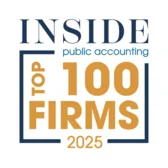On the heels of Accounting Standards Update (ASU) 2016-14, Presentation of Financial Statements of Not-for-Profit Entities, new revenue recognition standards are now in effect for not-for-profit organizations. Crucial to this new implementation will be determining what guidance applies to an organization’s diverse revenue streams.
Under prior guidance, accounting for grant awards have been a matter of interpretation as the Financial Accounting Standards Board (FASB) had not provided definitive guidance; however, with the issuance of Topic 606, Revenue from Contracts with Customers (Topic 606), further clarification was necessary to determine whether grants and contracts are within the scope of Topic 606. On June 21, 2018, the FASB issued ASU 2018-08, Not-for-Profit Entities (Topic 958): Clarifying the Scope and the Accounting Guidance for Contributions Received and Contributions Made (ASU 2018-08). This clarifying guidance was issued to address the current diversity in practice when accounting for grants or similar contracts with resource providers as either exchange transactions or contributions, and to provide further guidance when determining whether a contribution is conditional or restricted.
The key provisions of ASU 2018-08 clarify how an organization determines whether a resource provider is participating in an exchange transaction by evaluating whether the resource provider is receiving commensurate value in return for the resources transferred. Under prior guidance, many organizations understood that if a governmental agency acts on behalf of the general public, benefits received by the general public as a result of a grant should be considered commensurate value. Under the amendment of ASU 2018-08, the FASB has clarified that a benefit received by the general public is not equivalent to the commensurate value received by the resource provider. Further, the execution of a resource provider’s mission does not equate to commensurate value received. This clarification confirms that most government grants would be accounted for as contributions under the amendments of ASU 2018-08. However, it should be noted that there will be some exceptions.
Once an organization has determined that a transfer of assets qualifies as a contribution, they must then determine whether conditions have been attached by the grantor. Under the guidance in ASU 2018-08, this determination is made on the basis of whether an agreement includes both a measurable barrier that must be overcome, and either a right of return of assets transferred or a right of release of a promisor’s obligation. The FASB has provided several indicators to guide the assessment of whether an agreement contains a measurable barrier including the extent to which a stipulation limits discretion by the recipient on the conduct of activity and whether a stipulation is related to the purpose of the agreement. Finally, once an organization determines a contribution is unconditional, they will then need to consider whether the donor has imposed time or use restrictions.
As a reminder, the clarified guidance in ASU 2018-08 does not imply that not-for-profit organizations may not also identify revenues that must be accounted for under Topic 606. The amendments included in ASU 2018-08 are effective for annual periods beginning after December 15, 2018. For entities that are either a public business entity, a not-for-profit that has issued, or is a conduit debt obligor, the amendments are effective for annual periods beginning after June 15, 2018. The amendments should be applied on a modified prospective basis, where the amendments are applied to agreements that are either i) not completed as of the effective date, or ii) entered into after the effective date. The amendments should be applied only to the portion of revenue or expense that has not yet been recognized before the effective date, and no prior-period results should be restated. The entity will be required to disclose the nature of and reason for the accounting change, and explain the reasons for significant changes in each financial statement line item resulting from applying the amendments. Early adoption is permitted.
As this clarifying guidance may lead to significant changes, professionals, preparers, and auditors who work with, or within, not-for-profit organizations should be prepared to implement these changes as we close the 2019 calendar year. Make sure to identify all revenue streams when evaluating applicable guidance, and consider reviewing contracts to document your understanding. It may also be necessary for organizations to update policies and procedures in order to gather information required for year-end adjustments and financial statement disclosures.
If you or a professional colleague is concerned about the impact of the new FASB revenue recognition rules for not-for-profit organizations, please don’t hesitate to contact us today.


